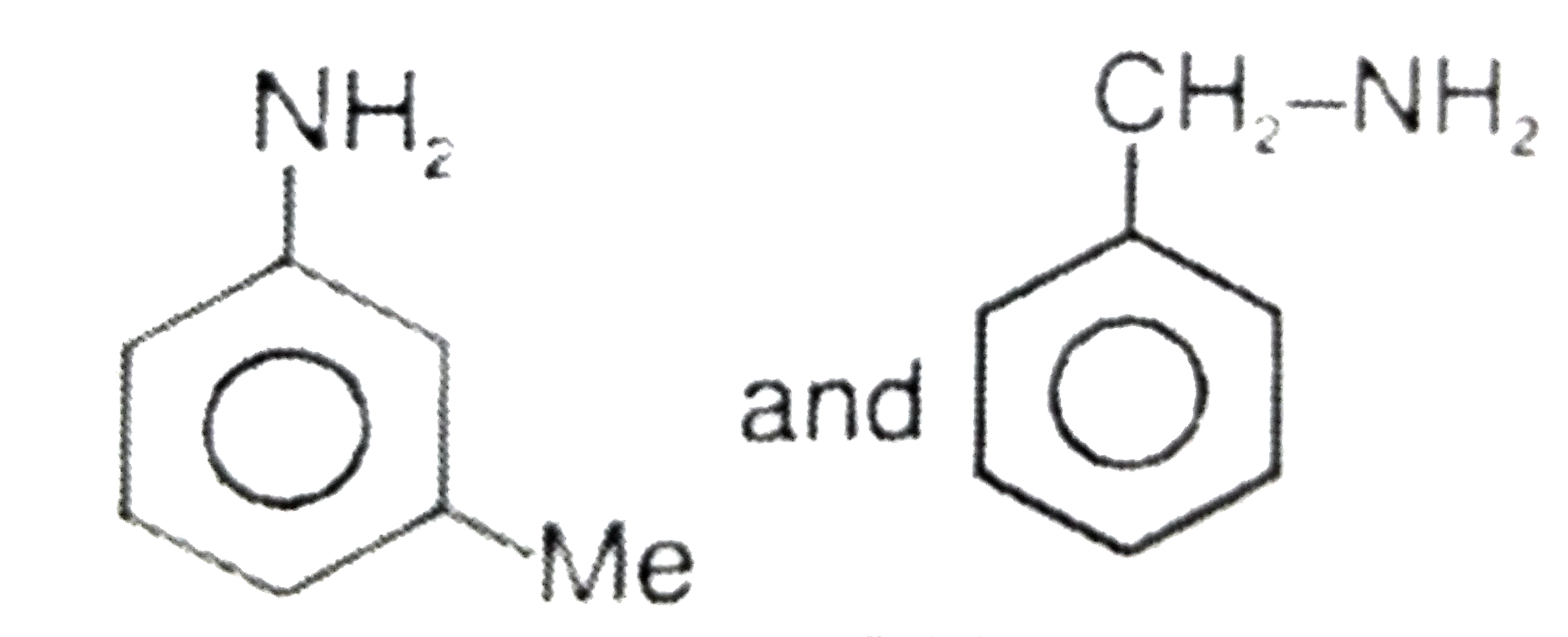Cyclohexylamine and aniline can be distinguished by
Hinsberg's test
Carbylamine test
Bromine test
Beilstein's test
The correct Answer is:C
To distinguish between cyclohexylamine and aniline, we can use the Bromine test. Here’s a step-by-step explanation of how this works:
Step 1: Understand the Structures
- Cyclohexylamine: This is a six-membered carbon ring (cyclohexane) with an amino group (-NH2) attached.
- Aniline: This is a benzene ring with an amino group (-NH2) attached.
Step 2: Perform the Bromine Test
- When bromine (Br2) is added to aniline, the amino group (-NH2) is activated due to resonance with the benzene ring. This leads to the substitution of bromine atoms at the ortho and para positions of the benzene ring.
- The reaction will produce a white precipitate of 2,4,6-tribromoaniline.
Step 3: Observe the Reaction with Cyclohexylamine
- Cyclohexylamine, on the other hand, does not have a benzene ring. When bromine is added to cyclohexylamine, there is no significant reaction, and thus no white precipitate is formed.
Step 4: Conclusion
- The formation of a white precipitate indicates the presence of aniline, while the lack of reaction indicates cyclohexylamine. Therefore, the Bromine test can effectively distinguish between the two compounds.
Final Answer
The correct method to distinguish cyclohexylamine from aniline is the Bromine test (Option C).
---
- Cyclohexylamine: This is a six-membered carbon ring (cyclohexane) with an amino group (-NH2) attached.
- Aniline: This is a benzene ring with an amino group (-NH2) attached.
- When bromine (Br2) is added to aniline, the amino group (-NH2) is activated due to resonance with the benzene ring. This leads to the substitution of bromine atoms at the ortho and para positions of the benzene ring.
- The reaction will produce a white precipitate of 2,4,6-tribromoaniline.
- Cyclohexylamine, on the other hand, does not have a benzene ring. When bromine is added to cyclohexylamine, there is no significant reaction, and thus no white precipitate is formed.
- The formation of a white precipitate indicates the presence of aniline, while the lack of reaction indicates cyclohexylamine. Therefore, the Bromine test can effectively distinguish between the two compounds.
The correct method to distinguish cyclohexylamine from aniline is the Bromine test (Option C).
Topper's Solved these Questions
- BOOK - MODERN PUBLICATIONCHAPTER - ORGANIC COMPOUNDS CONTAINING NITROGEN EXERCISE - Competition File (C) MULTIPLE CHOICE QUESTIONS9videos
ORGANIC COMPOUNDS CONTAINING NITROGEN
- BOOK - MODERN PUBLICATIONCHAPTER - ORGANIC COMPOUNDS CONTAINING NITROGEN EXERCISE - Competition File (D) MULTIPLE CHOICE QUESTIONS (based on the given passage/comprehension )7videos
ORGANIC COMPOUNDS CONTAINING NITROGEN
- BOOK - MODERN PUBLICATIONCHAPTER - ORGANIC COMPOUNDS CONTAINING NITROGEN EXERCISE - Competition File (OBJECTIVE TYPE QUESTIONS) (MULTIPLE CHOICE QUESTIONS (M.C.Q)) (A)30videos
ORGANIC COMPOUNDS CONTAINING NITROGEN
- BOOK - MODERN PUBLICATIONCHAPTER - HALOALKANES AND HALOARENESEXERCISE - UNIT PRACTICE TEST11videos
HALOALKANES AND HALOARENES
- BOOK - MODERN PUBLICATIONCHAPTER - POLYMERSEXERCISE - Competition file (OBJECTIVE TYPE QUESTIONS) (C. MULTIPLE CHOICE QUESTIONS)(Integer Type Questions)6videos
POLYMERS
Similar Questions
Knowledge Check
- Question 1 - Select One
Ethylamine and aniline can be distinguised by:
AHinsberg's testBDyeCLiebermann's nitrosoamine testDCarbylamine test - Question 2 - Select One
Benzylamine and aniline can be distinguish by
AHNO2 acidBCHCl3/KOHCBr2 waterDSchiff's reagent - Question 3 - Select One
 can be distinguish by ACHCl3+KOHBNaNO2+HCl followed by β-NaptholCCS2+HgCl2DNa metal
can be distinguish by ACHCl3+KOHBNaNO2+HCl followed by β-NaptholCCS2+HgCl2DNa metal

